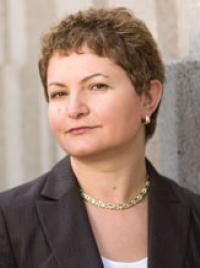
Heart failure and cardiac regeneration
Heart failure is the leading cause of morbidity and mortality in North America and has been identified as the second leading cause of extended hospital stays. The quality of life and the prognosis for this group of patients remains poor with one-year survival rates less than 40%. In addition, more than $1B of Canada's annual health budget is being spent for the care of patients with heart failure, rendering this disease an ever increasing socioeconomic burden.
Heart failure occurs when the heart is unable to adequately pump blood to meet the demands of the body. In the adult, cardiomyocytes are post-mitotic terminally differentiated cells that are unable to proliferate. This renders the heart particularly vulnerable to ischemic, toxic or biomechanical injury. In order to compensate for the irreversible damage that ensues, the left ventricle undergoes hypertrophy and dilatation. This process is ultimately detrimental and progressive left ventricular dysfunction develops. Our existing armamentarium of conventional pharmacological therapy can only slow the progression of the disease by alleviating the workload of the heart. Alternatives to medical therapy are limited to transplantation or mechanical assist devices. These approaches are highly invasive and associated with significant morbidity and mortality. Various cell-based therapies have also been described in the treatment of heart failure, however, the clinical significance of these approaches remains unclear. While these cell-based therapies continue to attract considerable interest, they are sufficiently problematic. As such, it is exceedingly important to consider alternative approaches that allow the discovery of novel treatment strategies to effectively maintain tissue homeostasis and restrict cardiomyocyte loss. Providing new therapies for heart failure will not only improve the quality of life for patients but also reduce the costs associated with patient care.
Tumour suppressors and coaxing the heart back into a proliferative state for the regulation of normal tissue homeostasis
Our concept of preventing cardiomyocyte loss is through the regulation of the cell cycle, either by altering tumour suppressor genes or providing a permissive environment for proliferation, to allow the heart to undergo repair at the site of injury and maintain tissue homeostasis.

 https://orcid.org/0000-0002-2824-1215
https://orcid.org/0000-0002-2824-1215